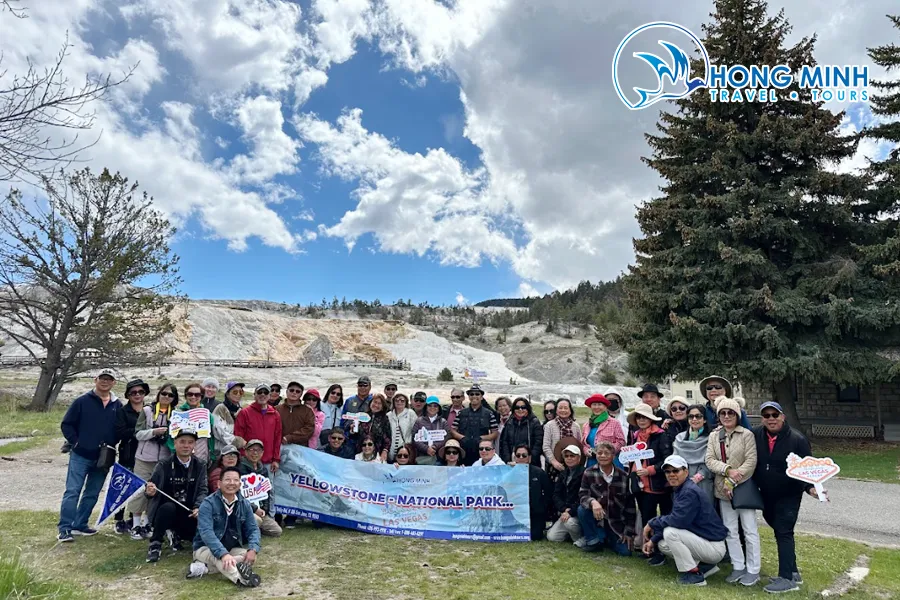Montana, with its pristine and majestic beauty, has long been a dream destination for nature lovers and photography enthusiasts. Renowned not only for the legendary Yellowstone National Park but also as a haven for those seeking to explore and capture unique wildlife moments, Montana will undoubtedly captivate photographers in search of exceptional wildlife experiences. This article will guide you to the top areas to pursue your passion and share tips for capturing the most impressive photographs.
Montana boasts a diverse ecosystem, from towering mountains to vast grasslands, creating ideal habitats for countless wildlife species. In Montana, you’ll have the chance to admire magnificent grizzly bears, powerful bison herds, graceful elk, playful mule deer, and many other rare animals. Each region in Montana offers different wildlife photography experiences, requiring careful preparation and knowledge.
So, where are the best areas for wildlife photography in Montana? Join “Du lịch khắp thế gian” (Travel Around the World) to discover must-visit destinations and equip yourself with useful tips to make your photography trip complete and successful.
Explore Wildlife Wonders at Yellowstone National Park
When mentioning Montana and wildlife, Yellowstone National Park, the first national park in the United States and the world, is indispensable. Yellowstone is not only famous for its unique geothermal wonders but also home to countless wildlife species, making it one of the premier wildlife photography destinations globally.
Yellowstone is home to the largest concentration of wildlife in the lower 48 states of the United States. Here, you can easily encounter bison herds grazing peacefully in meadows, elk gracefully strolling along riverbanks, or even powerful grizzly bears foraging in the deep forest. Yellowstone’s biodiversity is incredibly rich, promising photographers unique and surprising photo opportunities.
Featured Wildlife in Yellowstone
- Grizzly Bear: Yellowstone is one of the few places in the United States that still preserves a significant population of grizzly bears. These animals often appear in grasslands, along rivers, and in mountainous forests. Photographing grizzly bears requires patience, skill, and especially caution to ensure safety.
- Bison: An icon of the North American plains, bison live in large herds in Yellowstone. You can easily observe and photograph them in Hayden and Lamar Valleys, especially in the summer when herds congregate.
- Elk: Elk are common animals in Yellowstone, often appearing in shrubby forests and grasslands. In the autumn, the elk rutting season, you can witness impressive displays between males competing for mates.
- Mule Deer: Mule deer are also a frequently seen animal in Yellowstone. They are well-adapted to various habitats, from shrubby forests to grasslands and high mountain areas.
- Gray Wolf: After being reintroduced to Yellowstone in the 1990s, the gray wolf population has increased significantly. Although harder to spot than other animals, with luck, you might encounter them in Lamar Valley, known as the “Serengeti of North America.”
- Fox: Red foxes and gray foxes are common fox species in Yellowstone. They often appear in grasslands, forest edges, and sometimes even near residential areas.
- Pronghorn: The fastest land animal in North America, pronghorn inhabit the vast grasslands of Yellowstone.

Yellowstone National Park
Tips for Wildlife Photography in Yellowstone
- Ideal Time: Spring and autumn are the best times for wildlife photography in Yellowstone. Spring is the breeding season for many species, while autumn is the migration and mating season, offering unique observation and photography opportunities.
- Suggested Locations:
- Hayden and Lamar Valleys: Famous for large numbers of bison and elk. These are also the best places to spot gray wolves.
- Mammoth Hot Springs Area: Elk and mule deer frequently come to forage here.
- Yellowstone Lake and Yellowstone River: Ideal locations for observing waterfowl and riparian animals.
- Yellowstone Bear World: If you want to guarantee opportunities to observe bears and other wildlife at close range, Yellowstone Bear World is a must-visit wildlife park, located near West Yellowstone. Here, you can drive through the park and observe North American wildlife in their natural habitats.
- Equipment: A telephoto lens is indispensable for wildlife photography. Lenses with a focal length of 400mm or more will help you capture close-up shots from a distance without disturbing the animals. In addition, tripods, binoculars, and camouflage clothing are also useful items.
- Safety First: Always maintain a safe distance from wildlife. Do not feed or approach animals too closely. Follow park regulations and carry bear spray for protection when entering bear habitat.
- Patience and Perseverance: Wildlife photography requires patience and the ability to wait. Take time to observe and learn about animal behavior to increase your chances of capturing valuable moments.
Other Areas in Montana for Wildlife Photography Experiences
Besides Yellowstone, Montana has many other areas offering unique wildlife photography experiences:
- Glacier National Park: Located in northern Montana, Glacier is famous for its majestic mountain scenery, clear blue lakes, and rich wildlife. Here, you can find mountain goats, bighorn sheep, black bears, and many rare bird species.
- Flathead National Forest: This vast area borders Glacier National Park and is home to many of the same wildlife species. Flathead National Forest is less known than Yellowstone and Glacier, offering a quieter and more intimate wildlife photography experience.
- Benton Lake National Wildlife Refuge: Located near Great Falls, this refuge is an important stopover for migratory birds. In spring and autumn, you can observe thousands of waterfowl, wading birds, and raptors congregating here.
- Custer Gallatin National Forest: This national forest surrounds Yellowstone to the north, east, and west, providing diverse habitats for many wildlife species. This is a great option if you want to explore lesser-known areas around Yellowstone.
Montana is a priceless natural treasure for wildlife photography enthusiasts. With its diverse landscapes and rich ecosystems, Montana promises unforgettable experiences and impressive wildlife photographs. Plan your photography trip today and discover the unspoiled beauty of the “Big Sky Country”!